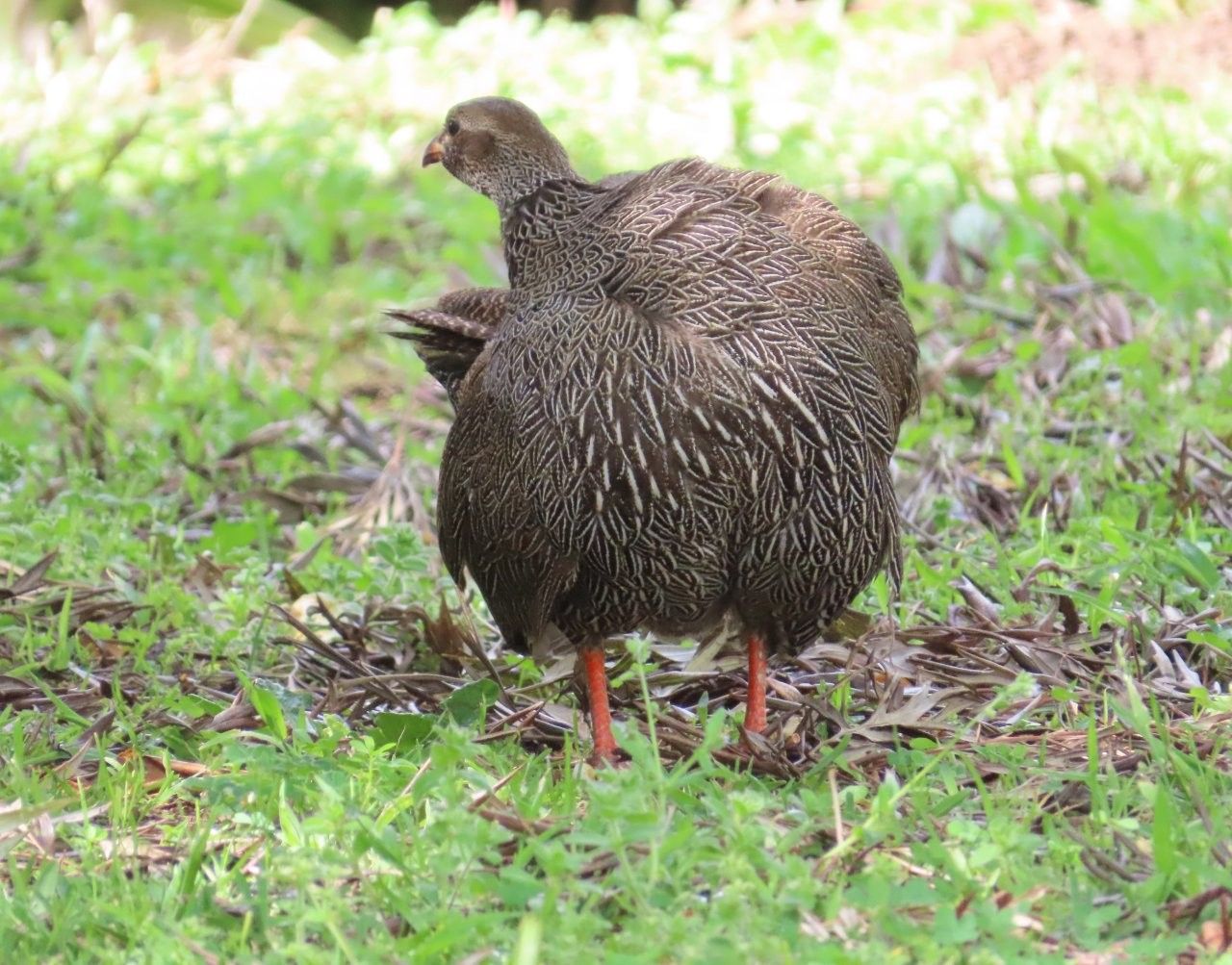...how hygienic birds are, as they preen themselves after every meal.

This is a female Cape Spurfowl (Pternistis capensis) demonstrating a preening session to me, and I also have a new baby dove to show you.
All birds, from the smallest to the biggest, have the habit of preening (washing) themselves. Not only preening to wash themselves, but also to oil their feathers. Did you know that birds can oil their feathers? They have a little gland at the base of their tails, and they dip their beak into it to extract the oil that they stroke on their feathers. It is called a Uropygial gland.
The uropygial gland, informally known as the preen gland or the oil gland, is a bilobed sebaceous gland possessed by the majority of birds used to distribute the gland's oil through the plumage by means of preening. It is located dorsally at the base of the tail (between the fourth caudal vertebra and the pygostyle) and is greatly variable in both shape and size. In some species, the opening of the gland has a small tuft of feathers to provide a wick for the preen oil.
So yeah, I have just shown you how birds can oil their feathers, and I think the part of a chicken that is called a parson's nose, is also that gland.
I just googled a "parson's nose", and it does indeed produce preening oil on chickens. It also has other functions.
Pygostyle is a skeletal condition in which the final few caudal vertebrae are fused into a single ossification, supporting the tail feathers and musculature. In modern birds, the rectrices attach to these. The pygostyle is the main component of the uropygium, a structure colloquially known as the bishop's nose, parson's nose, pope's nose, or sultan's nose. This is the fleshy protuberance visible at the posterior end of a bird (most commonly a chicken or turkey) that has been dressed for cooking. It has a swollen appearance because it also contains the uropygial gland that produces preen oil.**
Now, on a softer note, let me show you what was waiting for us at home.
Look at the bottom left of the picture, and what do you see?
A baby Laughing Dove! (Spilopelia senegalensis).
The amazing thing is, that the baby popped up onto the palisade fence, and I could pull the car into the garage. Then I had to use all my tact not to scare the baby as I walked back down the driveway to take photos of it.
It got so used to me, that it started preening itself, right in front of me.
I think that the baby watched the parents rushing here every afternoon at 5 pm to come and eat. So, the baby knew that it was safe to come here, and I bet that it will also come with the parents to come and eat. A problem that I have is that we have a pair of Ringneck doves that regard our front garden as their territory, and every time that the small doves come to eat, I have to stand guard to prevent the Ringneck's from attacking the smaller doves. We are looking forward to seeing the baby coming in with its parents to eat.
I think the parents are still regurgitating the feed for the baby, and so it will take some time for the baby to start eating on its own. Just some of the adventures we have here at home, as nature loves us so much that it also now comes to our home instead of us having to drive out to visit in nature. Quite often a Cape Robin-Chat also flies into the garage after insects, and I have posted many other birds that visit here. Such is life.
I hope you enjoyed the pictures and the story.
Photos by Zac Smith. All-Rights-Reserved.
Camera: Canon PowershotSX70HS Bridge camera.
Thank you kindly for supporting this post.